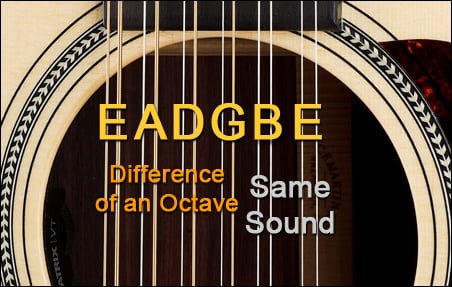
On this occasion I will show you the different types and varieties of acoustic guitars, and their different characteristics.
Acoustic or Electro-Acoustic Guitar

Among the acoustic guitars, there are also electro-acoustic guitars. Although the only difference between the two guitars is that the electro-acoustic guitar has an integrated amplification system.
Effects Used on Acoustic Guitar
When the acoustic guitar is amplified, it is usually used together with compression effects to avoid excessive volume peaks, and to make the notes sound more even, with greater sustain, and more body.
It is also very common to add other effects such as Reverb Hall or Delay to give depth to the sound, or even modulation effects such as Chorus.
The acoustic guitar can be considered a kind of electric guitar in a stand-alone format. The acoustic guitar is used as a substitute for the electric guitar in recordings known as unplugged. Although it is actually a type of guitar with a different feel and response than an electric guitar.
Differences Between Acoustic Guitar and Classical Guitar
As for the differences between an acoustic guitar and spanish guitar, the spanish guitar has a wide, thick neck and a completely flat or infinite radius fingerboard. As opposed to the narrow necks and more curved fingerboards of acoustic guitar.
The neck and body of a classical guitar meet at the 12th fret. The join on an acoustic guitar is at the 14th fret.

Furthermore, the acoustic guitar has a more voluminous body, unlike the smaller and lighter body of the Spanish guitar. The acoustic guitar needs to incorporate greater reinforcements in the bridge, due to the greater tension that the metal strings apply to the bridge. This way, the guitar is prevented from deforming.
If we hold an acoustic guitar in one hand and a Spanish guitar in the other, we will clearly notice the difference in weight, due to these reinforcements of the body, and the truss rod of the acoustic guitar. It is simply a matter of adapting the design of each instrument to its features.
Each Type of Guitar, with its Type of Strings
Not be feasible to install acoustic guitar strings on a Spanish guitar that uses nylon strings. Since the tensions of these materials are very different.
If we put steel strings on a classical guitar, it can deformed, or even the bridge can be torn off completely. Apart from the impossibility of adjusting the truss rod of the classical guitar. Since these models do not have this system.
The strings on an electric guitar are usually nickel-plated steel, and those on an acoustic guitar are usually bronze. But the acoustic guitar has four wound strings and two plain strings, instead of three wound and three plain strings as is common on electric guitar string sets.
So it would not work well to put electric guitar strings on an acoustic guitar either. Since the construction materials of electric guitar strings such as nickel or steel, are more oriented towards induction on the magnetic field of the electromagnetic pickup than to resonance. Something basic and essential for an acoustic guitar.
And to finish on this topic, if we put bronze strings on an electric guitar, it would not properly induce the magnetic field of an electric guitar pickup. Only pickups designed for acoustic guitar would work optimally, with the typical strings of this type of guitar.

I leave you a link at the end of the paragraph, if you need to delve deeper into the subject of Acoustic Guitar Strings.
TYPES of Acoustic Guitars: Woods
The woods used in the construction of acoustic guitars are quite varied, such as spruce, nato, cedar, maple, mahogany, or rosewood. We can find a large number of possible combinations of these woods in the development of the different parts of the guitar body such as the back, sides and top. Nato or mahogany are normally used in the construction of the neck, and rosewood or ebony in the construction of the bridge and fingerboard.
TYPES of Acoustic Guitars
Depending on the size and shape of the acoustic guitar body, several groups or types of acoustic guitars can be created.
Dreadnought Guitars
The Dreadnought style is one of the most popular designs, considered the standard model of acoustic guitar, also known as D size. A design used by virtually all manufacturers, developed back in the day by the legendary acoustic guitar brand Martin, and this shape reaches 80% of all production of the legendary brand.
Dreadnought acoustic guitars have a large pear-shaped body, and are distinguished by their round sound with great balance across the entire frequency range.

Jumbo Guitars
The Jumbo model is a typical Gibson guitar design. This guitar has a very voluminous figure-8-shaped body, mounted with a bridge with a very recognizable and characteristic shape.

This model has a deep and powerful sound, aimed at achieving the maximum sound volume.
A guitar with an impressive sound and aesthetic. Although due to their large size they are somewhat uncomfortable, especially for smaller guitarists. Although we can also have the Mini Jumbo models, to make things a little easier for us.
However, by reducing the body of the instrument, its sound would also be Mini Jumbo. A gain is almost always associated with a loss.
TYPES of Acoustic Guitars: Concert, Folk or Parlor
Another of these groups would be the concert guitars. In this group we would find the so-called 0. Double 0 (00), and triple 0 (000), typical of the Martin brand. Although these names are also generally used in other brands such as Epiphone.
0 Acoustic Guitars
The single 0 model is the smallest in size, known as concert guitars. The 00 would be called grand concerts. And the 000 would be called Auditorium. The proportion of the body would increase as we add zeros.

All these models refer to the same type of acoustic guitar, derived in its morphology from the Spanish guitar. But adapted to the greater tension caused by the emerged steel strings in the first decades of the 20th century.
The Model 0 is one of the first developed by the Martin brand with this type of strings. Guitar that was part essential part of American music such as Blues.
Later new larger models were added to the Martin catalogue, due to the need to obtain a greater sound presence when guitarists played alongside other instruments. In the process, different styles of acoustic guitar were born with different sounds, and each model had its own personality. These models were highly appreciated for fingerstyle or fingerpicking techniques.
The big models and of length scale tend to have a more balanced sound in terms of volume, clarity and presence across the entire frequency range.
While shorter scale and smaller sized models tend to have a sweeter sound and less volume. These models are generally less suitable for developing accompanying rhythms as their size decreases.

Parlor guitars are the smaller ones, with the body normally joined at the 12th fret. A very comfortable instrument, easy to transport and with a sweet sound.
12 String Acoustic Guitars
The 12-string acoustic guitar models are the most popular in this format of strings in pairs. These guitars have a high volume and a characteristic sound that produces a very particular chorus effect.
I’ll take this opportunity to show you how to tune a 12-string guitar. In fact, the tuning would be identical to the standard tuning of a 6-string guitar. Except that it would have 6 pairs of strings.

From the third string to the sixth pair of strings, there is a difference of one octave between the strings that form the pair. And for the first and second pair of strings, the tuning would be identical on both strings that form the pair.
TYPES of Acoustic Guitars: Roundback
One of the great innovations in electro-acoustic guitars would be the Roundback models developed by Ovation. Consequently, both the sides and the back of the guitar are made from a single piece of fiberglass or carbon fiber.

The design of this guitar is aimed at solving the feedback problems derived from traditional acoustic models. So its reason for being is the amplification of the instrument, and it is where the guitar develops all its potential and its characteristic nasal sound so particular and distinctive.
Unplugged or used acoustically, they produce a sound with little body and volume, compared to a classical acoustic guitar model. Although it doesn’t sound bad either. It depends on your taste.
Due to its rounded shape, the Ovation guitar tends to move quite a bit when playing standing up. It also tends to lean toward the player, and when playing seated, it tends to slide off the thigh.
Resonator Guitars or Dobro
Finally, we have the acoustic guitars with a metal resonator, or dobro. The sound of this type of guitar is produced by one or more metal cones instead of the soundboard. The body of the instrument can be made of wood and metal, or completely of metal.


The design of this model was aimed at achieving greater volume than a traditional guitar, and it is a guitar that stands out from other instruments.
This type of guitar has a very distinctive sound, with a tone similar to that of a banjo. It is highly appreciated in blues and bluegrass music, and in techniques as typical of these genres as the use of slide.
